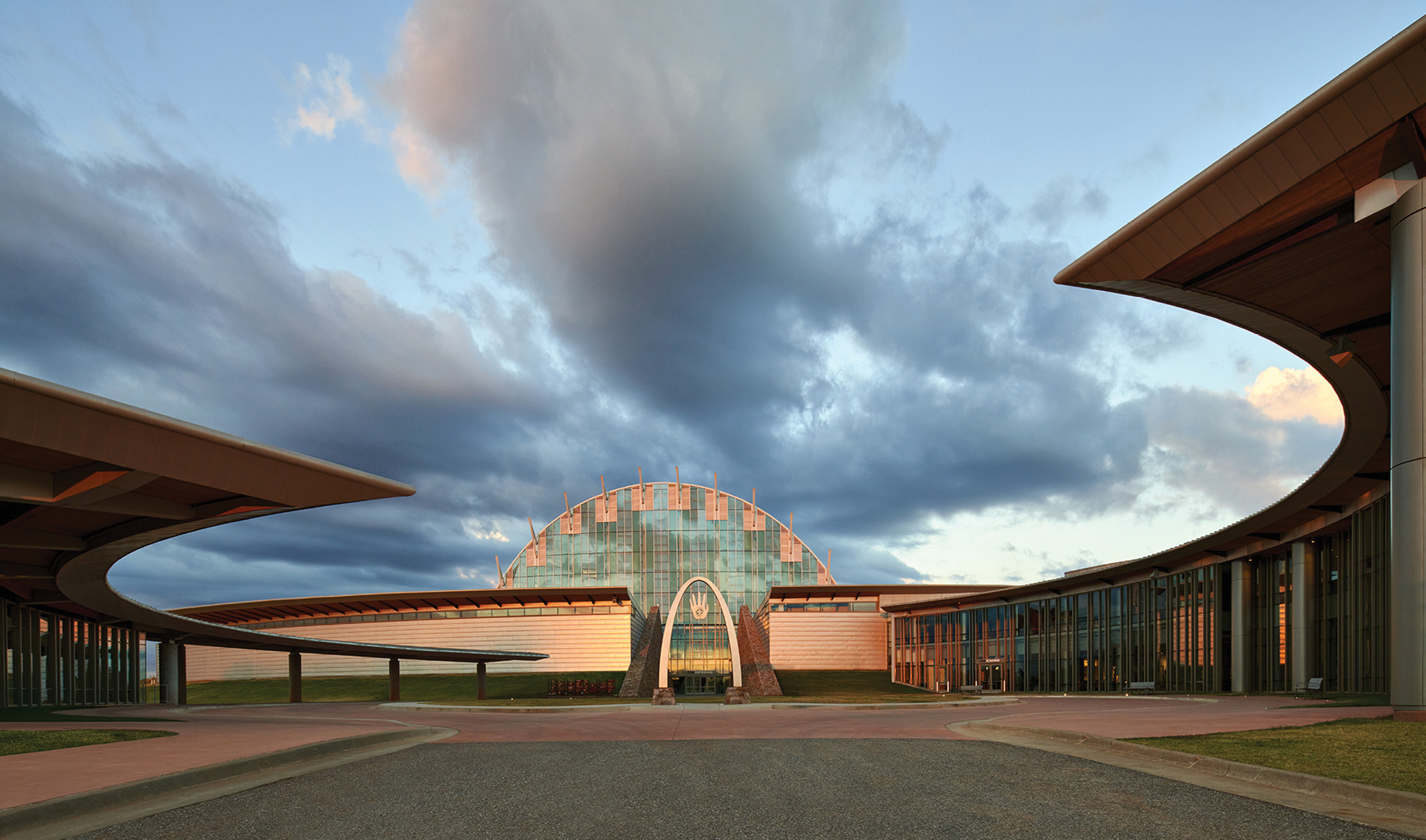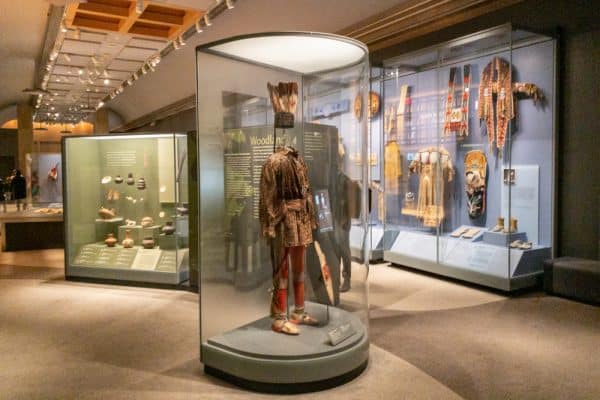
Native American Museums: A Nexus for Understanding Current Indigenous Issues
Native American museums have evolved significantly from their early iterations as repositories of ethnographic curiosities to become dynamic, vital institutions that not only preserve cultural heritage but also serve as critical platforms for understanding and addressing contemporary Indigenous issues. Far from being static showcases of a bygone era, these museums, particularly those tribally controlled or guided by Indigenous perspectives, actively engage with pressing concerns such as sovereignty, environmental justice, cultural revitalization, and the ongoing struggle against systemic inequities. This exploration delves into the multifaceted role of Native American museums in fostering a deeper, more nuanced comprehension of the challenges and resilience of Indigenous peoples today.
From Colonial Gaze to Indigenous Self-Representation: A Historical Trajectory
The history of collecting and exhibiting Native American cultural materials is deeply intertwined with colonial expansion and ethnographic study, often reflecting Eurocentric perspectives that framed Indigenous cultures as "primitive," "vanishing," or objects of scientific inquiry. Early collections were frequently amassed through expeditions, archaeological digs, and even grave robbing, leading to the decontextualization of sacred objects and ancestral remains. Museums like the Smithsonian Institution, the American Museum of Natural History, and various university collections, while eventually contributing to scholarly understanding, largely operated under a "colonial gaze," interpreting Indigenous history and culture for rather than with or by Indigenous peoples. This approach often perpetuated harmful stereotypes, presented Indigenous cultures as static historical relics, and ignored their contemporary vitality.
A significant paradigm shift began in the latter half of the 20th century, driven by Indigenous activism, self-determination movements, and a growing recognition of the ethical imperative to repatriate cultural patrimony. The establishment of tribally-owned and operated museums, cultural centers, and institutions like the National Museum of the American Indian (NMAI) in Washington D.C. marked a pivotal moment. These Indigenous-led initiatives fundamentally altered the museum landscape, prioritizing Indigenous voices, epistemologies, and interpretive frameworks. The NMAI, for example, distinguished itself by presenting Native perspectives on history and culture, emphasizing community engagement, and challenging traditional museum authority structures. This shift from "about us" to "by us" is crucial for understanding how these institutions now actively engage with current issues.

The Museum as a Site for Addressing Contemporary Issues
Native American museums today are not merely custodians of the past; they are vibrant centers for cultural affirmation, historical reckoning, and social justice. They provide essential spaces for Indigenous communities to tell their own stories, articulate their present-day struggles, and envision their futures.
1. Repatriation and Cultural Property Rights: Rectifying Historical Wrongs
Perhaps one of the most significant areas where Native American museums engage with current issues is through the process of repatriation. The Native American Graves Protection and Repatriation Act (NAGPRA) of 1990 in the United States, along with similar legislation and ethical guidelines in other countries, mandates the return of Native American human remains, funerary objects, sacred objects, and objects of cultural patrimony to lineal descendants and culturally affiliated Indigenous tribes.
Museums play a crucial role in facilitating this process, often working collaboratively with tribes to identify, research, and return items. This is not merely a legal exercise but a profound act of spiritual healing, cultural revitalization, and an affirmation of Indigenous sovereignty. The ongoing struggle for repatriation highlights contemporary issues such as the recognition of Indigenous spiritual beliefs, the restitution of stolen land and resources (as cultural objects are intrinsically linked to ancestral territories), and the decolonization of museum practices. Museums, by actively engaging in repatriation, acknowledge past injustices and contribute to the ongoing process of reconciliation and cultural healing.
2. Cultural Revitalization and Language Preservation: Sustaining Indigenous Identity
In the wake of historical policies aimed at cultural assimilation (e.g., residential schools, forced removals), many Indigenous languages and cultural practices faced severe decline. Native American museums are at the forefront of revitalization efforts. They serve as living cultural centers where traditional arts, crafts, storytelling, songs, and ceremonies are taught, practiced, and celebrated.
Museums host language immersion programs, traditional craft workshops (e.g., basket weaving, pottery, beadwork), and traditional dance performances. By showcasing and actively supporting these practices, they directly address the contemporary challenge of cultural erosion and contribute to the resilience and continuity of Indigenous identities. These institutions become vital community hubs where intergenerational knowledge transfer occurs, ensuring that cultural heritage remains vibrant and relevant for future generations.
3. Environmental Justice and Land Rights: Indigenous Stewardship in Crisis

Indigenous peoples have long been stewards of the land, holding deep ecological knowledge and spiritual connections to their ancestral territories. Native American museums often highlight these relationships, showcasing traditional land management practices and the profound impact of environmental degradation on Indigenous communities.
They address current issues such as the fight against resource extraction projects (e.g., pipelines, mining) that threaten sacred sites and contaminate water sources, the disproportionate impact of climate change on Indigenous communities, and the ongoing struggle for land rights and treaty enforcement. Exhibitions might feature Indigenous perspectives on conservation, highlight legal battles over land and water, or educate visitors about the importance of Indigenous ecological knowledge in addressing global environmental crises. By doing so, museums contextualize contemporary environmental justice movements within a rich history of Indigenous land stewardship and resistance.
4. Sovereignty and Self-Determination: Affirming Political Autonomy
A central theme in contemporary Indigenous life is the assertion of sovereignty and the right to self-determination. Native American museums provide platforms to educate both Indigenous and non-Indigenous audiences about tribal governance, treaty rights, and the ongoing challenges to Indigenous political autonomy.
Exhibits might delve into the history of treaty making and breaking, the complexities of federal Indian law, the structure of tribal governments, and contemporary efforts to strengthen self-governance, economic development, and nation-building. By demystifying these concepts, museums challenge pervasive misconceptions about Indigenous peoples and advocate for a greater understanding and respect for their inherent political rights. They demonstrate that Indigenous nations are not merely cultural groups but distinct political entities with inherent rights to govern themselves.
5. Challenging Stereotypes and Misrepresentation: Shaping Accurate Narratives
Harmful stereotypes about Native Americans persist in popular culture, contributing to prejudice and misunderstanding. Native American museums actively work to dismantle these stereotypes (e.g., the "noble savage," the "vanishing Indian," the "casino Indian") by presenting nuanced, diverse, and accurate portrayals of Indigenous cultures, histories, and contemporary lives.
Through authentic voices, historical context, and diverse narratives, museums challenge monolithic representations and showcase the immense diversity among hundreds of distinct Indigenous nations. They provide spaces for critical dialogue, encouraging visitors to question preconceived notions and engage with the complexities of Indigenous identities and experiences. This active debunking of stereotypes is crucial for fostering cross-cultural understanding and combating systemic racism.
6. Social and Health Justice: Addressing Disparities and Trauma
Indigenous communities often face significant disparities in health outcomes, education, housing, and economic opportunities, stemming from historical trauma, colonization, and ongoing systemic inequities. Native American museums can serve as spaces for acknowledging these challenges and promoting healing.
Exhibitions or programs might address the legacy of residential schools, the impact of historical trauma on mental health, or contemporary issues like the crisis of Missing and Murdered Indigenous Women, Girls, and Two-Spirit People (MMIWG2S). By providing context and humanizing these issues, museums raise awareness, foster empathy, and advocate for social and health justice. They can also highlight Indigenous-led initiatives for community well-being and resilience, offering pathways to healing and empowerment.
Pedagogical Approaches and Impact
Native American museums employ diverse pedagogical approaches to engage visitors deeply with these issues. They often prioritize:
- Oral Histories: Incorporating first-person narratives and traditional storytelling to convey Indigenous perspectives.
- Community Engagement: Involving tribal elders, cultural practitioners, and youth in exhibit development and programming.
- Interactive and Experiential Learning: Creating immersive exhibits that encourage active participation and reflection.
- Critical Dialogue: Facilitating discussions and workshops that address complex and sometimes uncomfortable historical truths.
The impact of these museums extends beyond mere education. For Indigenous communities, they are spaces of cultural affirmation, intergenerational connection, and resilience. For non-Indigenous audiences, they offer invaluable opportunities for critical self-reflection, empathy development, and a deeper understanding of the ongoing relevance of Indigenous rights and sovereignty.
Conclusion
Native American museums are indispensable institutions for understanding current Indigenous issues. They have transcended their historical role as passive repositories to become dynamic centers of cultural revitalization, historical truth-telling, and social advocacy. By confronting the legacies of colonialism, championing repatriation, preserving languages, advocating for environmental and social justice, and asserting sovereignty, these museums provide crucial platforms for Indigenous voices to be heard, understood, and respected. They serve as essential bridges between past and present, fostering critical dialogue, challenging persistent stereotypes, and ultimately contributing to a more just and equitable future for all.


